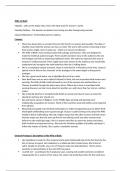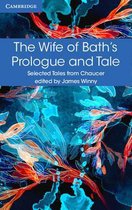Other
Geoffrey Chaucer The Wife of Bath Prologue and Tale - Context & In-depth Notes and Language Analysis on the Prologue
- Course
- Institution
- Book
Geoffrey Chaucer The Wife of Bath Prologue and Tale English Literature Context (AO3) - Historical Background, Women, Chaucer etc. In-depth Notes and Language Analysis (AO2) on both the General Prologue of the Canterbury Tale (section on the Wife of Bath - esp the description of her appearance) a...
[Show more]




